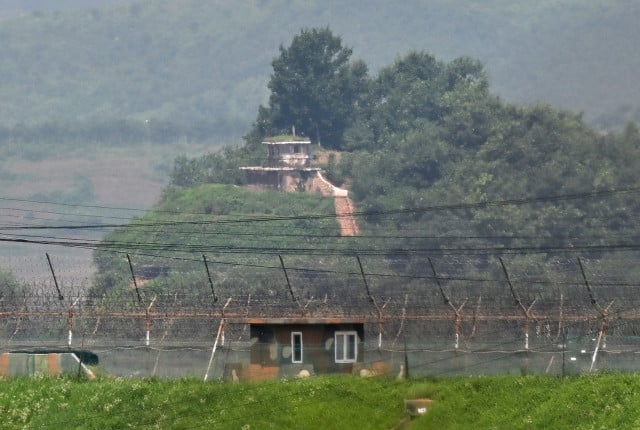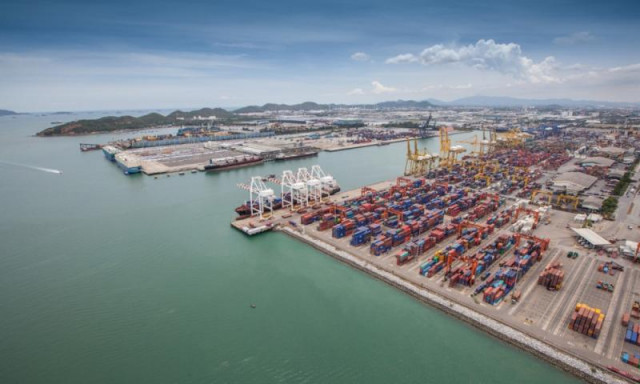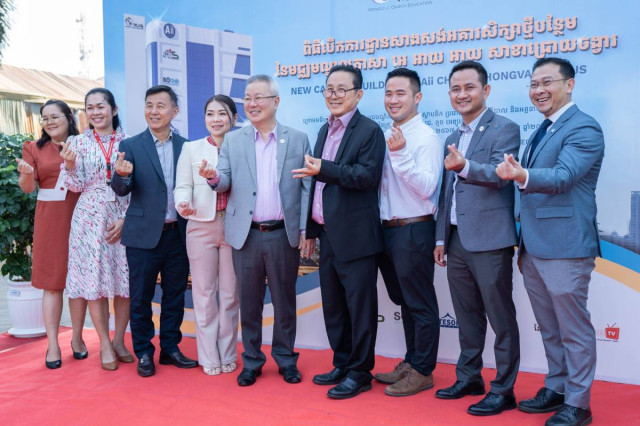The Implications of North Korea’s Opening its Border for Southeast Asian Countries

- By Sokvy Rim
- August 27, 2023 4:20 PM
On Jan. 22, 2020, the People’s Republic of Korea, known as North Korea, closed its border, citing the spread of the COVID-19 pandemic.
By May 2022, there were records of around 3.55 million North Koreans suspected of having COVID-19, amounting to 14 percent of North Korea’s total population. However, there were only around 70 confirmed deaths by May 2022. Because of its strict curfew, North Korea was able to prevent the spread of the pandemic in 2022, as there were only four reported cases of COVID-19 by Aug.11, 2022. North Korea Supreme Leader Kim Jong Un referred to this achievement as the “greatest miracle.” This raises the question: If North Korea is as successfully as it claimed, why is the country still closing its borders as of now?
It seems as if North Korea closing its borders is more to curtail growing people-to-people interaction along its border with China. The spread of COVID-19 in North Korea—possibly one of the most isolated countries in the world—suggests that prior to the pandemic, the country was not as isolated as it seemed. There was a prevalence of traditional and informal trade along the North Korea-China border including silkworm, seafood, fuel, Western medicines, smartphones and ideas flowing in. Smartphones imported from China would enable North Korean people to access the outside world’s information. It should be noted that around 3 million North Koreans are believed to own smartphones which manufactured by Pyongyang and Arirang brands. The phones’ software does not work with foreign files. They only work with clips, apps, sound files, text tiles created by North Korea’s Red Star operating system.
The existence of trade along the border seems to be an annoyance for the North Korean regime. Prior to the pandemic, the China-North Korea border was the main route to bring in products imported from China. The flow of external products and ideas to North Korea is a concern for the North Korean dictatorship as the regime has long tried to isolate its population from accessing the outside world, barring songs, movies, information, and especially ideas. In addition, frontiers have been the main channel used by many North Korean defectors to escape to foreign countries where they have spoken of atrocities and severe human rights violation they said were committed by the regime. This may be one of the main reasons why North Korea started building kilometers of wall, watchtowers, wire fencing, and has strengthened fences and guard posts along its border along China and Russia. The main goal is to regulate activity along the border.
By 2019, there were 1,000 or so North Korean defectors who escaped the country, while the number dropped to 47 in 2022 as the country reinforced its borders and worked on building a border wall. Satellite images published by Reuters News on May 27, 2023—showed that North Korea had nearly finished constructing its wall. Thereby it is expected that North Korea will open the border very soon.
Implication on Southeast Asian countries
Foreign currency is very critical for the survival of the North Korean regime that attempts to acquire it in any possible way. Previously, it was reported that the North Korean government sent its people to work in foreign countries to earn foreign currency such as in China, Russia, and countries in Africa, the Middle East and Southeast Asia. However, in 2018, the United Nations reinforced sanctions on North Korea, which led to all members of the United Nations to shut down their North Korea’s business operations and expel North Korean workers back to their own country. This resulted in the repatriation of a large number of North Korean workers from several regions, particularly from Southeast Asia known for having close diplomatic ties with North Korea.
While building the wall could help secure the regime, it limits the informal trade between North Korea and other countries, particularly China that is North Korea’s largest trading partner. The two-way trade reached US$1.2 billion in 2022. It will somewhat affect North Korea’s economics. It is expected that North Korea will diversify its source of foreign currency and reinforce its existing business operations once the country lifts some restrictions. The Southeast Asian (SEA) region could be the primary objective for North Korea. It should be noted that most countries in SEA still maintain some level of diplomatic relations with North Korea including U.S.’ key allies such as Singapore and Thailand. Therefore, it is easier for North Korea to maintain its activities in the region.
As North Korea reopens its border, there will be some implications on Southeast Asian states.
North Korea’s ability to produce nuclear missiles could result in arms smuggling as the country is in need of foreign currency to maintain and improve its military capabilities.
North Korea had been known to be involved in illicit arms smuggling. For instance, in October 2017, a North Korean ship transported a cache of over 30,000 rocket-propelled grenades in a ship registered in Taiwan under Cambodia’s flag. The International Ship Registry of Cambodia revealed that North Koreans had been using the ship since 2012. This had prompted Cambodia’s Ministry of Foreign Affairs and International Cooperation to release a statement saying that “the use of the Cambodian flag of convenience by a ship, including the Jie Shun, is illegal.” The Cambodian government had previously emphasized that the kingdom had terminated since 2016 its agreement with three North Korean firms for using Cambodia’s flag of convenience.
North Korea has utilized various techniques to smuggle weapons including chemical weapon and nuclear technologies. It was reported by the United Nations that North Korea transferred “nuclear-related and ballistic-missile-related equipment, know-how, and technology” to many other countries including Libya, Syria, Egypt, and Southeast Asian countries including Malaysia, Myanmar, and Vietnam. For instance, on Feb. 13, 2017, North Korean agents exported a chemical substance known as a nerve agent to Malaysia. The chemical substance was successfully used to kill Kim Jong-Nam—half-brother of North Korea Supreme Leader Kim Jong Un—who was murdered at Kuala Lumpur International Airport. North Korea’s ability to export chemical warfare to Malaysia was due to good diplomatic relations between the two countries. It was reported that there were around 1,000 North Koreans in Malaysia by 2017. For this reason, Malaysia was a hub for North Korea’s arms smuggling and money laundering, including the smuggle of nerve agent for the murder of Kim Jong-Nam. After the assassination, four North Korean agents were accompanied by North Korean diplomat to the airport. Their flight to Pyongyang was carefully planned to avoid countries that might intercept their plane.
Given its current economic crisis, there is a possibility that North Korea would export arms and nuclear technologies to ASEAN countries, particularly the military-led government in Myanmar. It was reported that there had been the transfer of some parts of missile, raw material and North Korean experts to assist Myanmar in a missile program. Similarly, Myanmar signed an agreement with Russia to establish a nuclear power plant in Myanmar. This could enhance the prospect for Myanmar to acquire nuclear weapons if its military government is under threat. It should be noted that a country with a nuclear power plant has sufficient capabilities to redirect enriched uranium for military purpose.
With technological advancement, North Korea will utilize additional activities such as cybercrime and scamming. It was reported that in 2022, North Korean hackers earned around $1.2 billion from crypto theft. Previously, warnings were issued that Southeast Asia could be subjected to North Korea’s crypto theft as the region is experiencing a surge of cryptocurrency transactions in business and is lacking coordinated regulation. With the increasing threat of North Korea’s cybercrimes and crypto thefts, many countries have launched alerts regarding the issue. For instance, the South Korean government has warned of North Korea’s online scamming including using fake profiles to apply for freelance work.
Against this backdrop, the nuclear proliferation in the Korean peninsula, particularly North Korea’s nuclear development, should be the concern of countries in the region. As ASEAN adopted the Southeast Asia Nuclear Non-Proliferation Commission (SEANWFZ), which aimed to maintain the region as a nuclear-weapon-free zone, ASEAN countries should comply with the United Nations’ sanctions and put pressure on North Korea to stop testing, developing and transferring nuclear technology.
Sokvy Rim is a research fellow at the Cambodian Institute for Cooperation and Peace (CICP). His research interests focus on Cambodia’s foreign policy and its engagement with China and Southeast Asian countries. His view does not reflect his affiliation with CICP.















